| 1 |
Abstract |
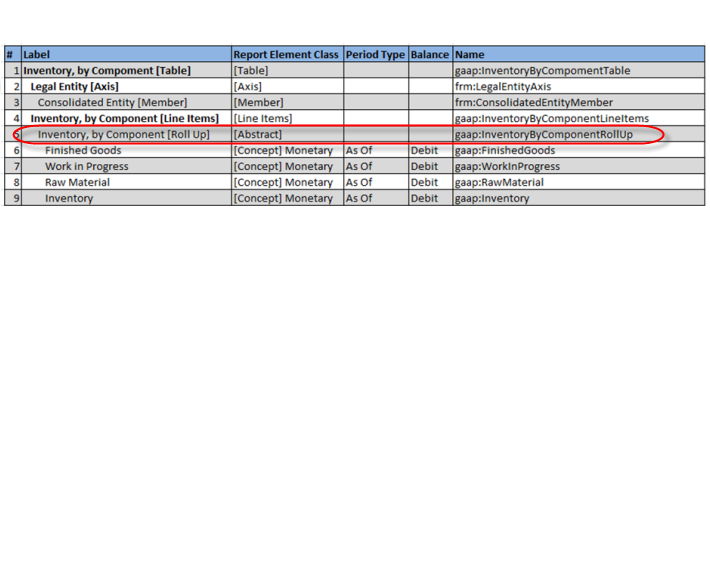 |
Functional Term |
An abstract is a type of report element. |
|
 |
 |
 |
OK |
| 2 |
Adjustment |
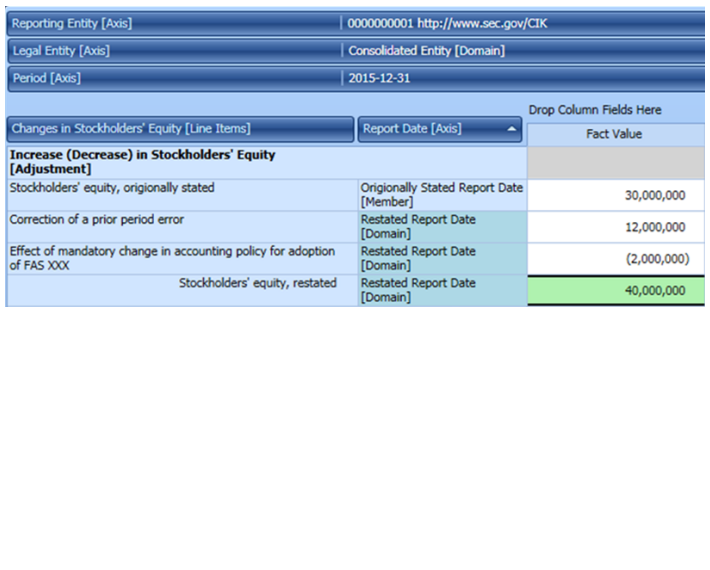 |
Type of ConceptArrangementPattern |
An adjustment is a type of concept arrangement pattern which represents a basic mathematical reconciliation between an originally stated value and a restated value usually due to a correction or error: Originally stated balance + adjustments = restated balance |
|
 |
 |
 |
OK |
| 3 |
Arithmetic |
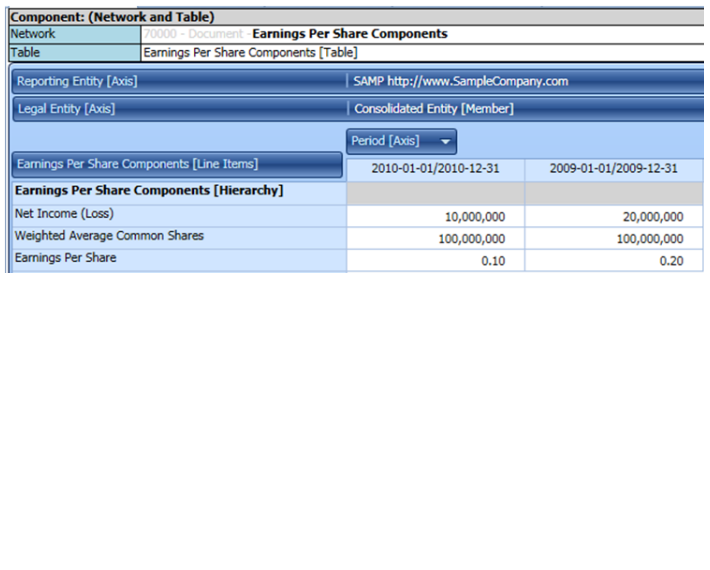 |
Type of ConceptArrangementPattern |
Arithmetic is a type of concept arrangement pattern which represents any arbitrary mathematical relationship between a set of numeric facts. |
|
 |
 |
 |
OK |
| 4 |
Aspect |
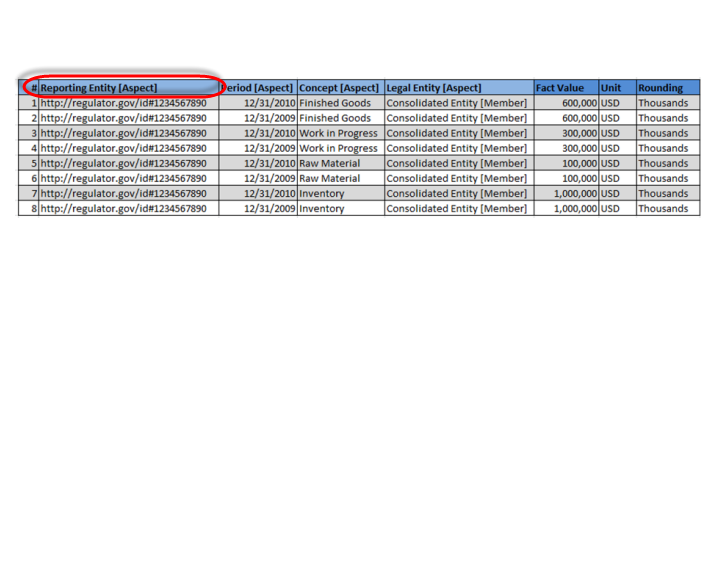 |
Property of Fact |
An aspect describes a fact (an aspect is a property of a fact). An aspect or distinguishing aspect provides information necessary to describe a fact or distinguish one fact from another fact within a report. A fact may have only the three core aspects (entity, calendar period, concept) or zero to many additional distinguishing aspects. (Common synonyms for aspect are characteristic, dimension, and [Axis].) |
|
 |
 |
 |
OK |
| 5 |
Axis |
 |
Functional Term |
An axis is a type of report element. A.k.a dimension or characteristic. |
|
 |
 |
 |
OK |
| 6 |
Calendar Period Aspect |
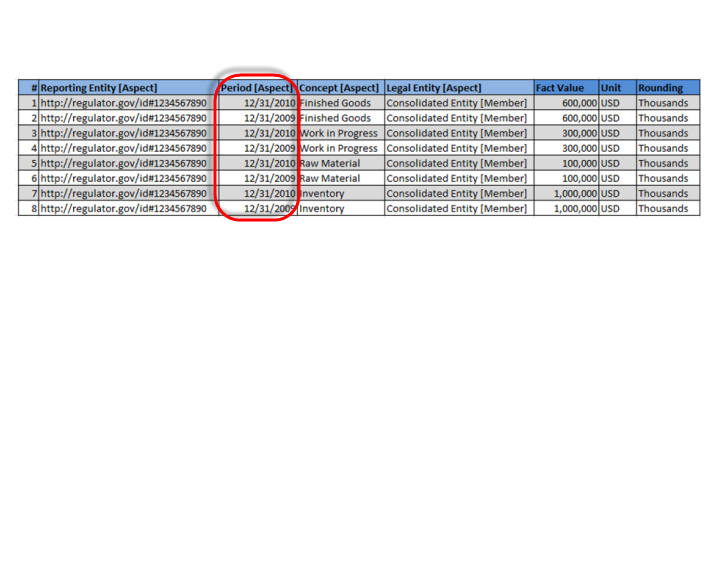 |
Type of CoreAspect |
A calender period aspect is a core aspect that distinguishes the calendar period of a reported fact. |
|
 |
 |
 |
OK |
| 7 |
Concept |
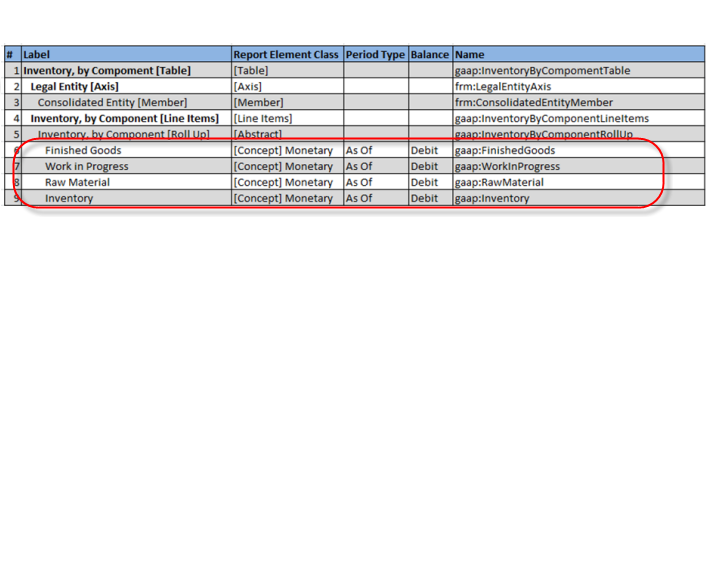 |
Functional Term |
Implementation of an Aspect. A core abstract. A Concept or Abstract is essentially the member or value of the Primary Item or [Line Items] dimension. |
|
 |
 |
 |
OK |
| 8 |
Concept Arrangement Pattern |
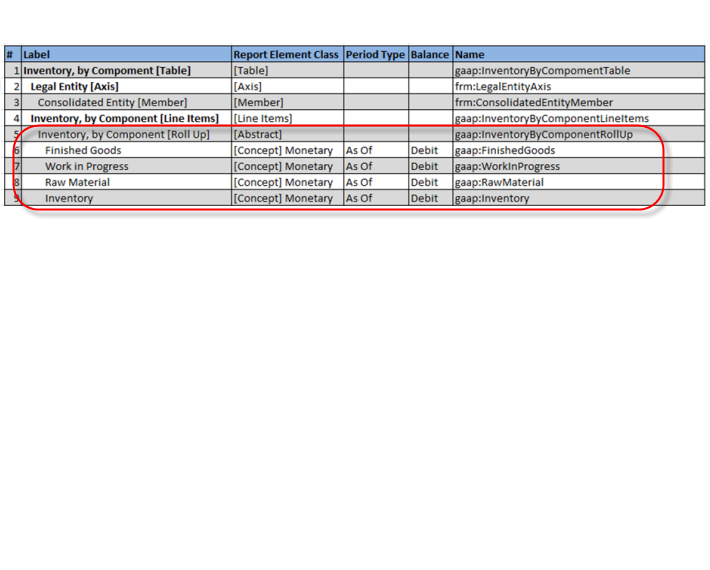 |
Property of Structure |
Relation between concepts within the concept aspect. |
|
 |
 |
 |
OK |
| 9 |
Concept Aspect |
 |
Type of CoreAspect |
A concept aspect is a core aspect that is used to express the concept that relates to a fact. A.k.a. primary item. |
|
 |
 |
 |
OK |
| 10 |
Consistency Type Rule |
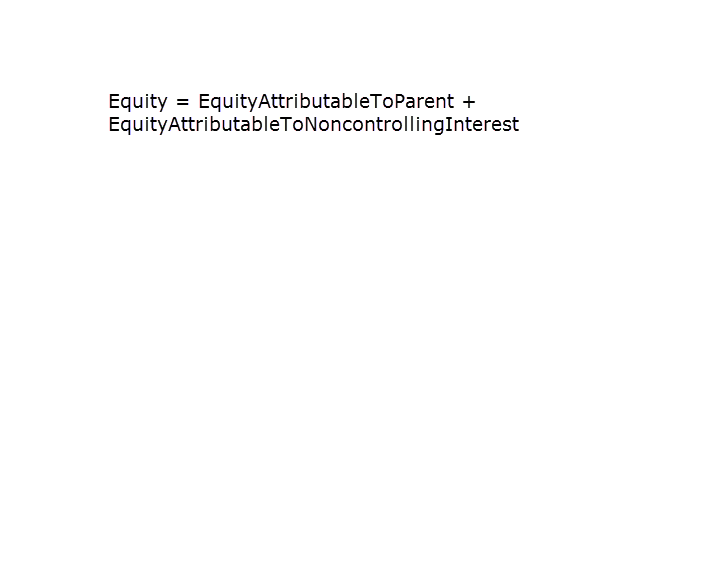 |
Type of Rule (Assertion) |
A consistency rule tests the relations of fundamental accounting concept relations within a report against a reporting style. |
A consistency type rule or also a consistency crosscheck rule is something like 'Assets = Current Assets + Noncurrent Assets' and are used in the context of some Reporting Style. Consistency type rules are UNIVERSAL to a specific reporting style. The type of error this detects are inconsistencies and contradictions between information reported in different structures. |
 |
 |
 |
Draft |
| 11 |
Core Aspect |
 |
Type of Aspect |
A core aspect is a type of aspect that is required. |
|
 |
 |
 |
OK |
| 12 |
Dimension |
 |
Functional Term |
A dimension is a type of report element. A.k.a. aspect or Axis. |
|
 |
 |
 |
OK |
| 13 |
Disclosure |
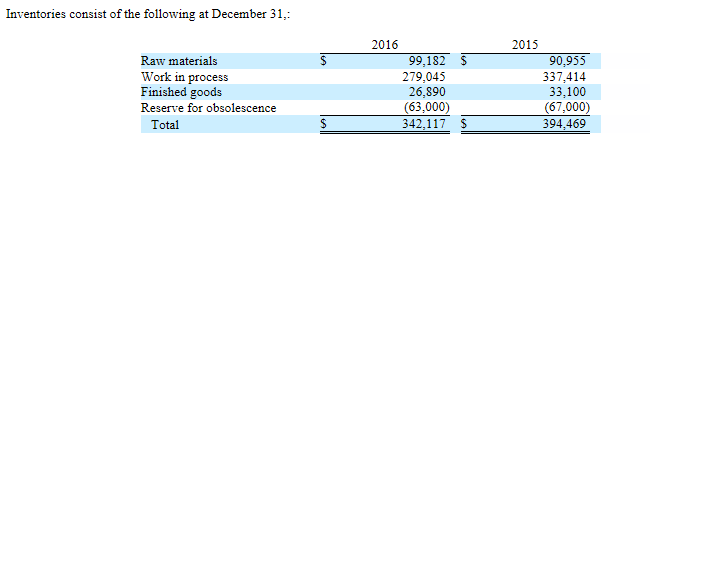 |
Property of Structure |
A disclosure is a set of one to many fact sets or a set of one to many structures which form an accounting disclosure that is either required by statutory or regulatory rules or provided at the descretion of a reporting entity. |
|
 |
 |
 |
OK |
| 14 |
Disclosure Mechanics Rule |
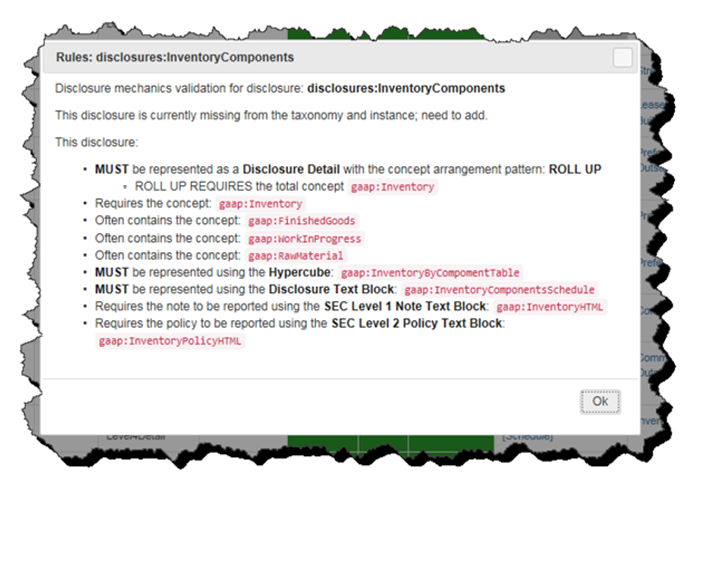 |
Type of Rule (Assertion) |
A disclosure mechanics rule is a rule that describes the structural organizational and representation of a disclosure against a specification of that disclosure. |
A disclosure mechanics rule are rules that are used to specify what constitutes a correct representation of a specific disclosure. For example, the 'Components of inventory disclosure' (a) is a ROLL UP, (b) there are specific concepts that can be used to represent the TOTAL of the roll up; (c) if the disclosure exists, then the policies that must exist; (d) the Level 3 Disclosure Text Block that is used to represent the disclosure, etc. There are a number of XBRL arcroles that are used to represent this type of rule in the XBRL Definition Relations linkbase. (Here is an example of disclosure mechanics rules for ONE DISCLOSURE, 'Inventory, Net [Roll Up]'. |
 |
 |
 |
OK |
| 15 |
Exemplar |
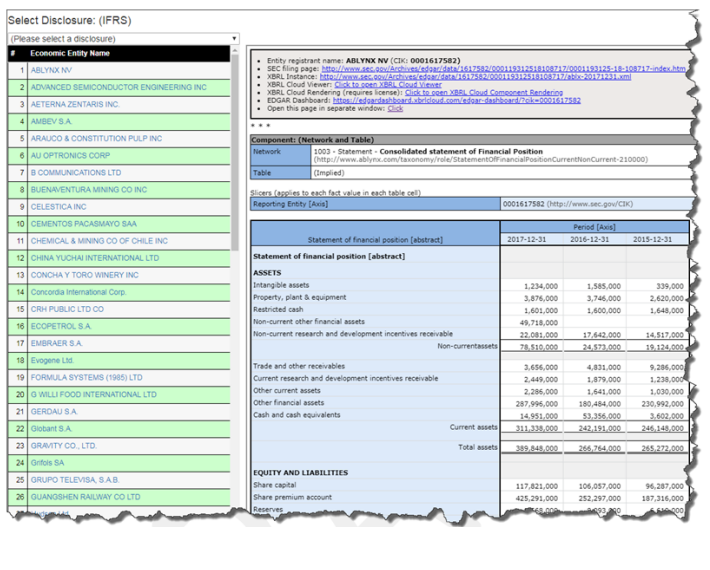 |
Property of Disclosure |
An exemplar is a representation of a dislocure from an existing report of some economic entity that can be leveraged in the process of creating a report. |
|
 |
 |
 |
OK |
| 16 |
Fact |
 |
Simple Term |
A fact is reported. A fact defines a single, observable, reportable piece of information contained within a business report, or fact value, contextualized for unambiguous interpretation or analysis by one or more distinguishing aspects (properties of the fact). A fact value is one property of a fact. Every fact has exactly one fact value. |
|
 |
 |
 |
OK |
| 17 |
Fact Set |
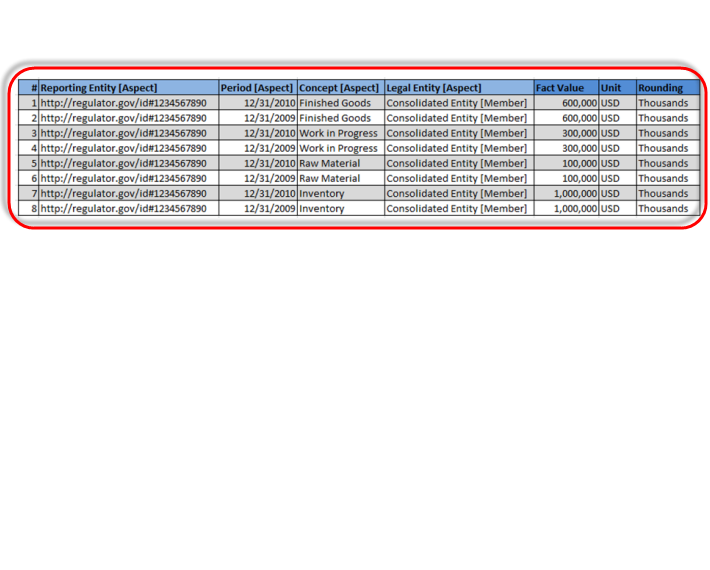 |
Functional Term |
A fact set is a set of facts which go together (tend to be cohesive and share a certain common nature) for some specific purpose within a report. (Common synonym for Fact Set is Fact Table and Block.) |
|
 |
 |
 |
OK |
| 18 |
Fact Table |
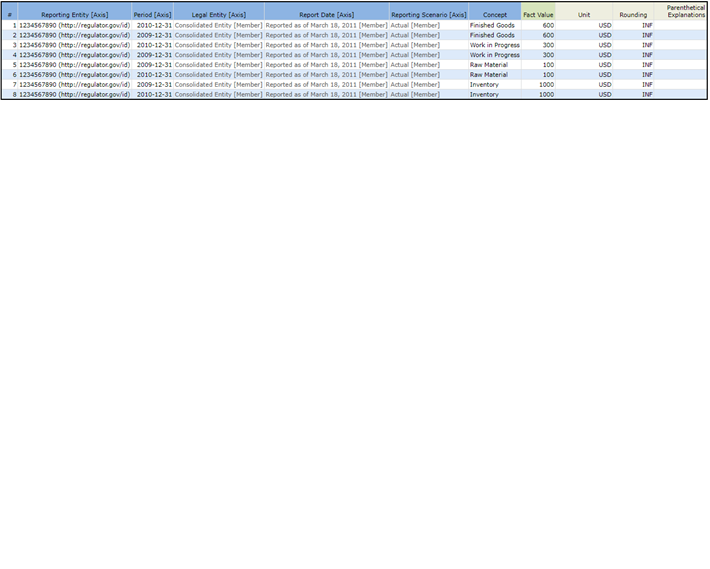 |
Part of FactSet |
A fact table is a way of presenting a fact set to the user in an interface |
|
 |
 |
 |
OK |
| 19 |
Fact Value |
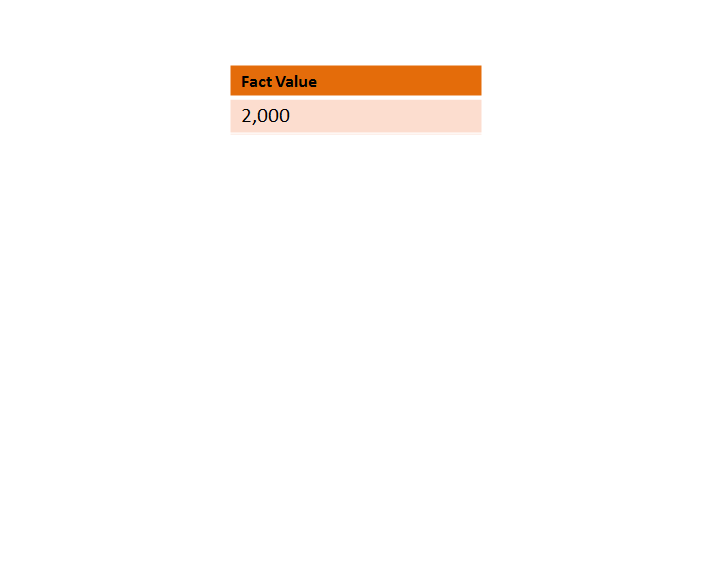 |
Property of Fact |
A fact value is a property of a fact. |
|
 |
 |
 |
OK |
| 20 |
Flow |
 |
Type of CalendarPeriodAspect |
A type of calendar period aspect that is used to represent a fact over a period of time. A.k.a. duration. |
|
 |
 |
 |
OK |
| 21 |
Grain |
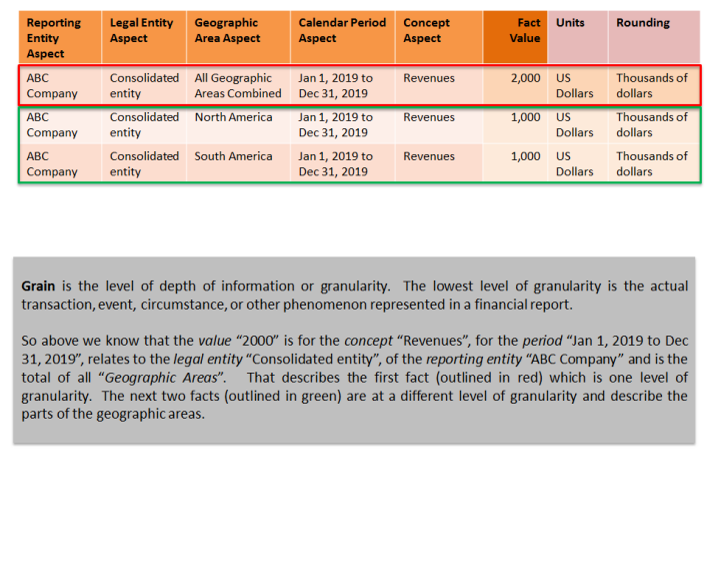 |
Property of Fact Set |
Grain is the level of depth of information or granularity. |
|
 |
 |
 |
OK |
| 22 |
Hypercube |
 |
Functional Term |
A hypercube is a type of report element. A.k.a. table or cube. |
|
 |
 |
 |
|
| 23 |
Impute Type Rule |
 |
Type of Rule (Assertion) |
An impute rule is a rule that explains how to derive facts that have not been explicitly reported based on other facts that have been reported or which have been derived from other reported information. |
An impute rule or a deduction is an IF. . .THEN statement that has a precondition that is used to derive information from other information that already exists. For example, if 'Assets' was explicitly reported and 'Current Assets' was explicitly reported; but 'Noncurrent Assets' was NOT REPORTED and the rule 'Assets = Current Assets + Noncurrent Assets' exists; THEN the value of Noncurrent Assets can be 'imputed' or 'derived' using the two reported facts and the rule. Note that impute rules are UNIVERSAL to a specific reporting style. Impute rules are represented using XBRL Formula. |
 |
 |
 |
OK |
| 24 |
Structure Definition |
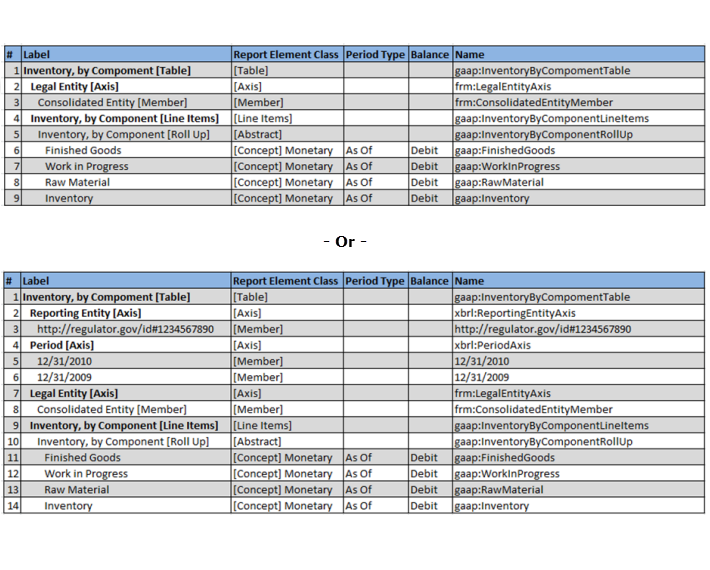 |
Property of Structure |
An information model definition is used to represent the structure of the report elements that are used to define the model of a fact set. |
This should be changed to: InformationStructureDefinition |
 |
 |
 |
Rename? |
| 25 |
Level 1 Note Text Block |
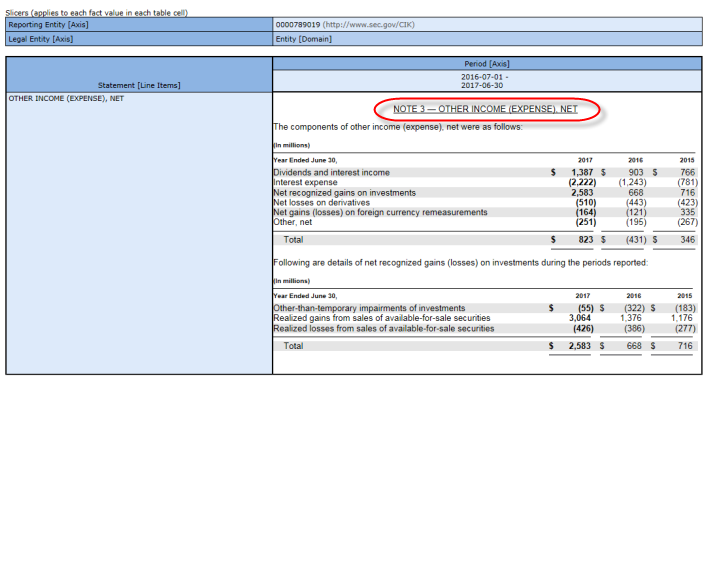 |
Type of TextBlock |
A level 1 note text block is a type of text block. |
|
 |
 |
 |
OK |
| 26 |
Level 2 Policy Text Block |
 |
Type of TextBlock |
A level 2 policy text block is a type of text block. |
|
 |
 |
 |
OK |
| 27 |
Level 3 Disclosure Text Block |
 |
Type of TextBlock |
A level 3 disclosure text block is a type of text block. |
|
 |
 |
 |
OK |
| 28 |
Line Items |
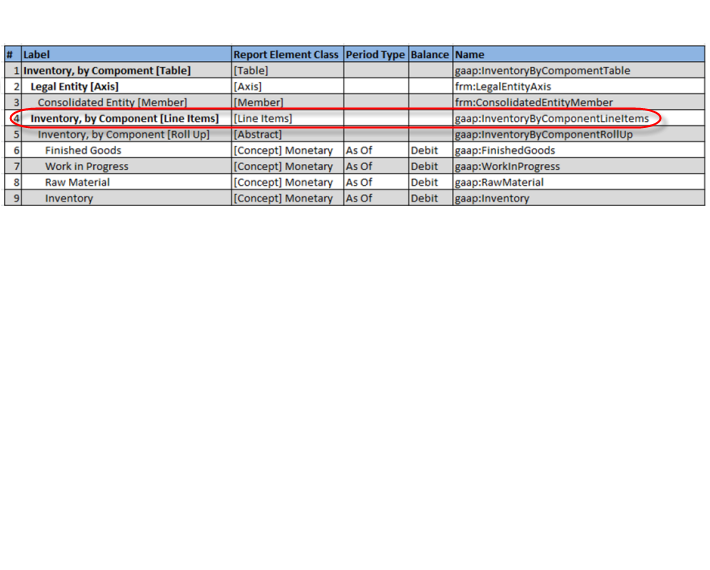 |
Functional Term |
A line items is a type of report element. a.k.a primary items. |
|
 |
 |
 |
OK |
| 29 |
Mapping Type Rule |
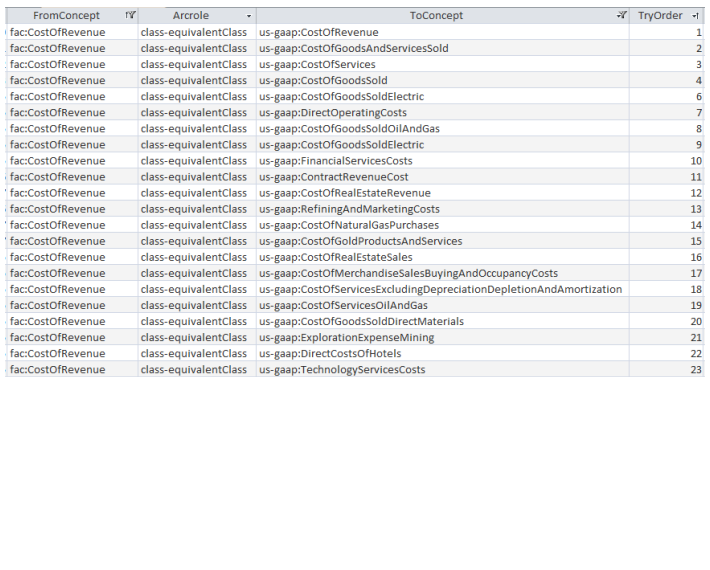 |
Type of Rule (Assertion) |
A mapping rule is a rule that explains how a base taxonomy concept relates to a fundamental accounting concept. |
A mapping rule is very similar to, and might actually be exactly like, a Type/Class Rule. For example, if you wanted to extract information from a report related to 'Net Cash Flow' (fac:NetCashFlow), any of these concepts might be used: us-gaap:CashAndCashEquivalentsPeriodIncreaseDecrease, us-gaap:CashPeriodIncreaseDecrease, us-gaap:CashAndCashEquivalentsPeriodIncreaseDecreaseExcludingExchangeRateEffect. Mapping rules tell you WHAT concept to look for, IN ORDER. |
 |
 |
 |
OK |
| 30 |
Mathematical Rule |
 |
Type of Rule (Assertion) |
A mathematical rules expresses the relations between numeric facts. |
A mathematical rule is any roll up, roll forward, adjustment, variance, other arithmetic association between terms and are SPECIFIC to a reporting entity. Mathematical rules are represented using XBRL calculation relations and XBRL Formulas. |
 |
 |
 |
OK |
| 31 |
Member |
 |
Functional Term |
A member is a type of report element. |
|
 |
 |
 |
OK |
| 32 |
Member Aggregation |
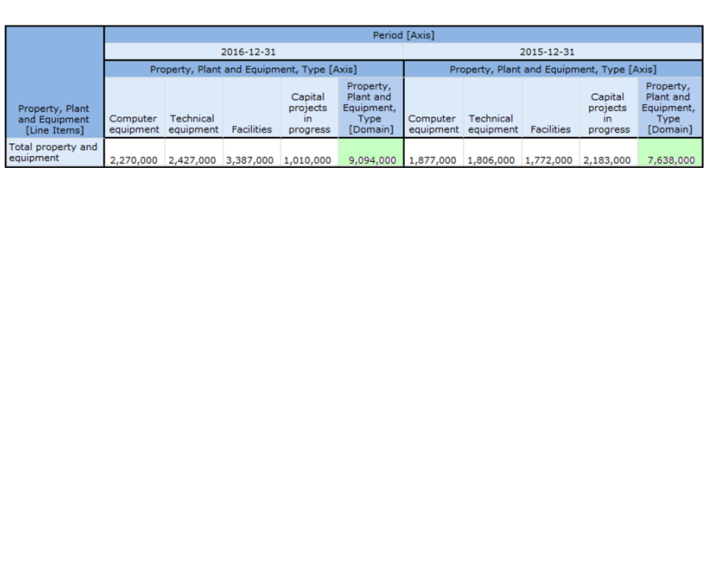 |
Type of MemberArrangementPattern |
Member aggregation is a type of member arrangment pattern where the members of an axis roll up. |
|
 |
 |
 |
OK |
| 33 |
Member Arrangement Pattern |
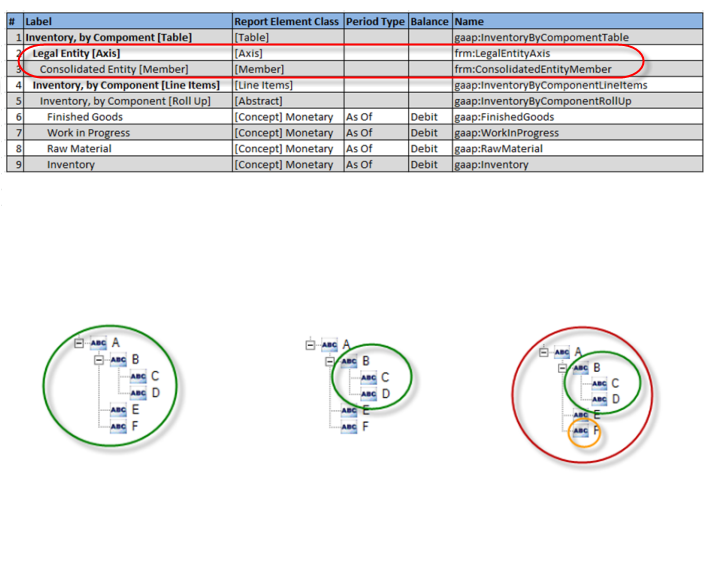 |
Property of Structure |
Relations between members within an aspect other than the concept aspect. |
|
 |
 |
 |
OK |
| 34 |
Member Flat List |
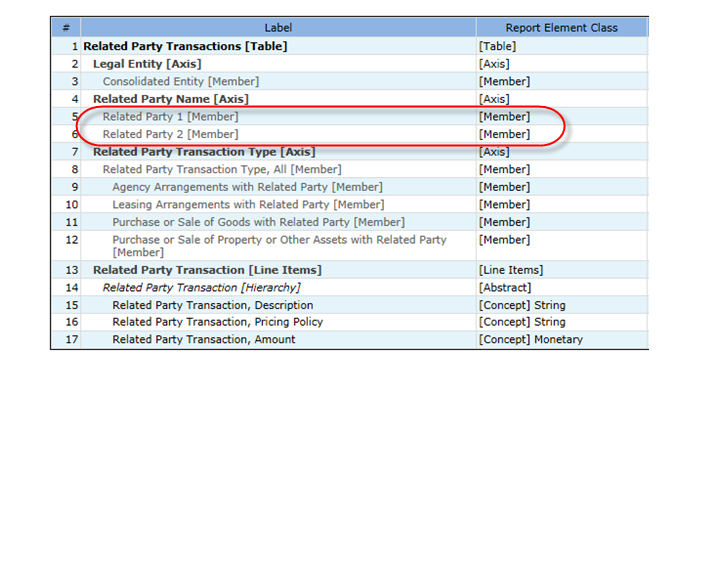 |
Type of MemberArrangementPattern |
Member flat list is a type of member aggregation pattern where the members for a flat list. |
|
 |
 |
 |
Draft |
| 35 |
Member Nonaggregation |
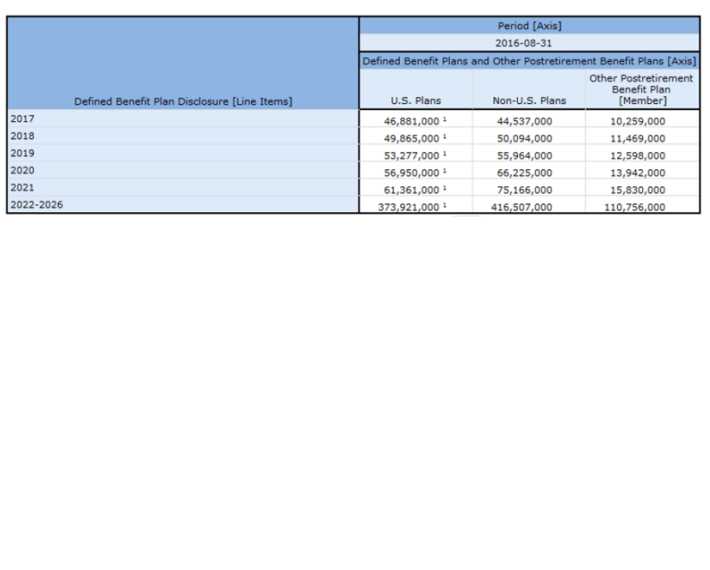 |
Type of MemberArrangementPattern |
Member nonaggregation is a type of member arrangement pattern where the members of an axis do not roll up. |
|
 |
 |
 |
Draft |
| 36 |
Network |
 |
Functional Term |
A network is a type of report element. |
|
 |
 |
 |
OK |
| 37 |
Noncore Aspect |
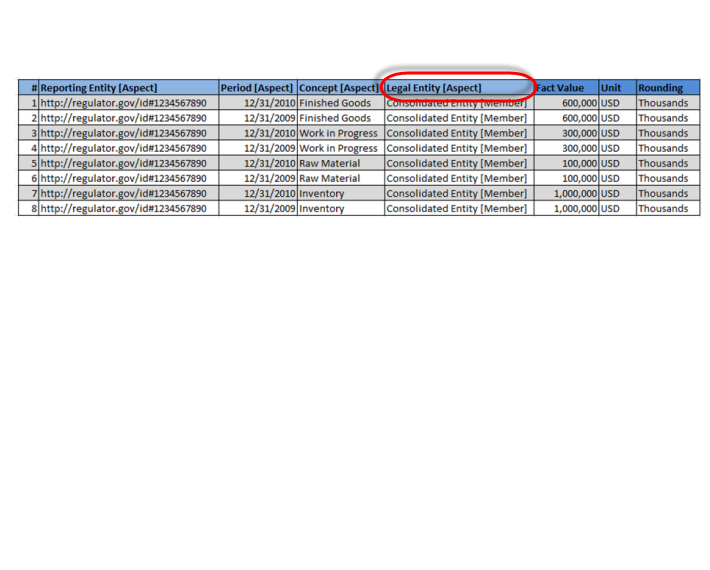 |
Type of Aspect |
A noncore aspect is a type of aspect that is optional. |
Noncore aspects are defined using XBRL dimensions in a taxonomy. |
 |
 |
 |
OK |
| 38 |
Nonnumeric Fact Value |
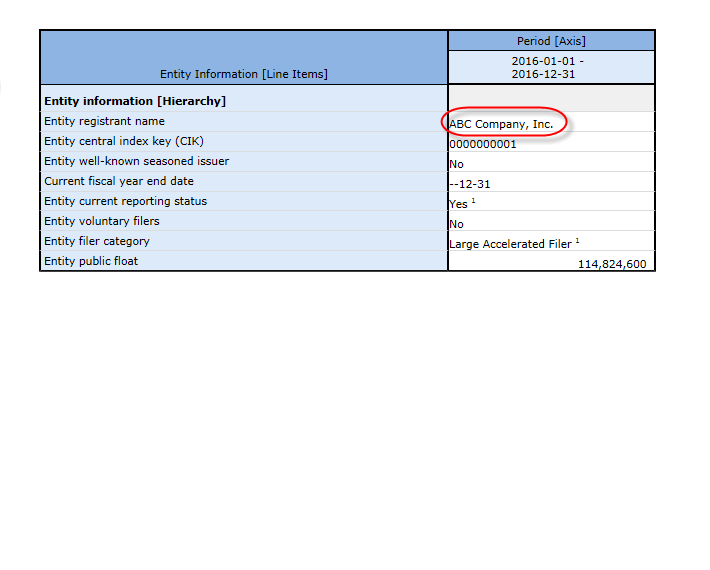 |
Type of FactValue |
A nonnumeric fact is a type of fact value that is not numeric in nature and therefore does NOT need a units or rounding property. |
|
 |
 |
 |
OK |
| 39 |
Numeric Fact Value |
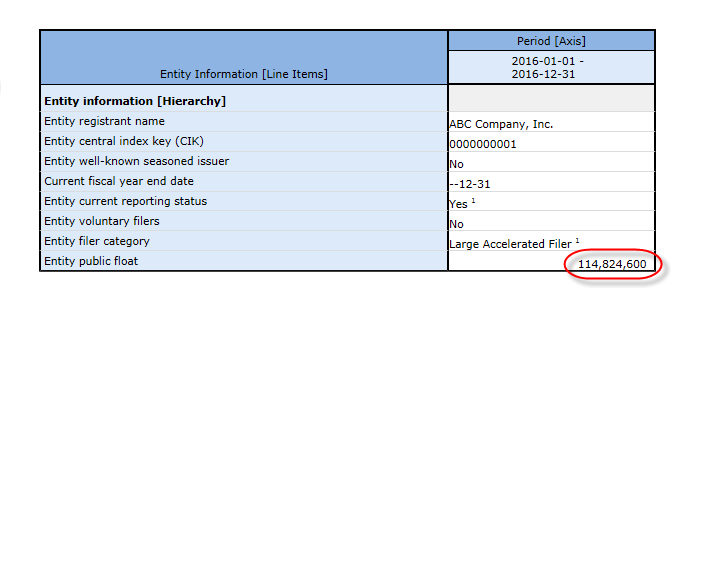 |
Type of FactValue |
A numeric fact value is a type of fact value that is numeric in nature and therefore requires a units property and a rounding property. |
|
 |
 |
 |
OK |
| 40 |
Parenthetical Explanation |
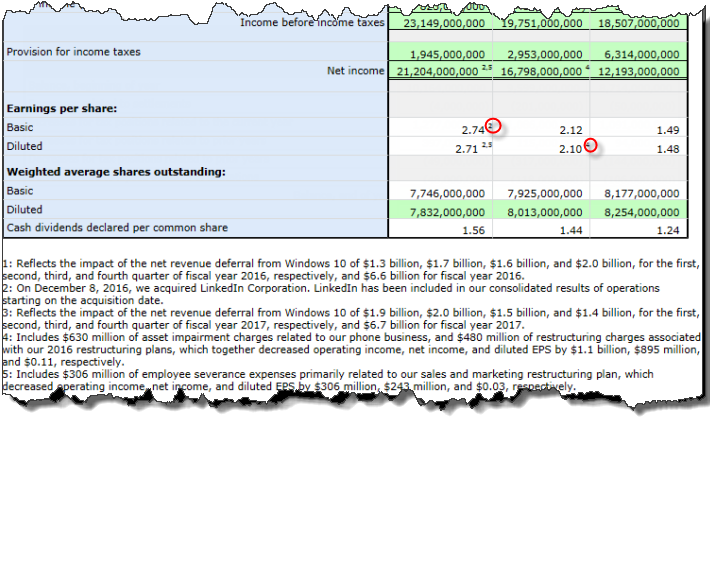 |
Property of Fact |
A parenthetical explanation provide additional descriptive information about a fact. |
|
 |
 |
 |
OK |
| 41 |
Prose |
 |
Type of FactValue |
Prose is a type of value that is structure in nature (i.e. a table, an ordered list, an unordered list, paragraphs of text, or any combination of those structures). |
|
 |
 |
 |
OK |
| 42 |
Rendering |
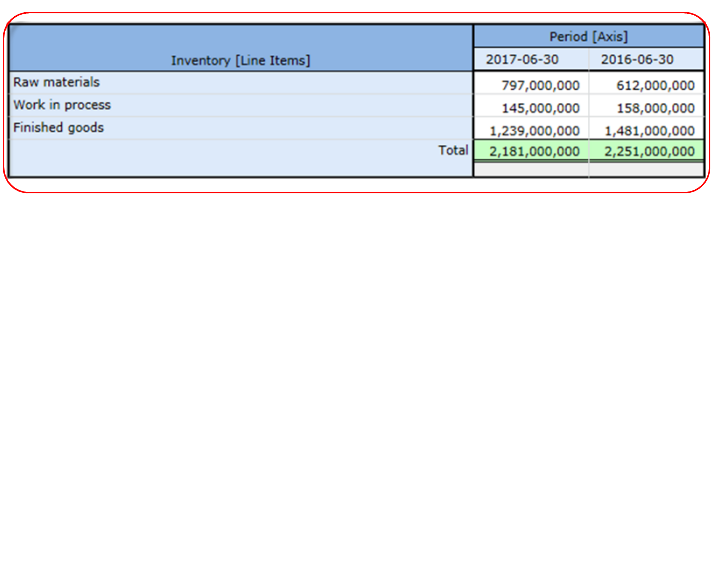 |
Part of FactSet |
A rendering is part of a fact set and is generated using metadata and common best practices used for rendering information. |
For example, when a double underscore is used and when a single underscore is used is not reflected in metadata but rather this is reflected in common best practices used. |
 |
 |
 |
OK |
| 43 |
Report |
 |
Functional Term |
Information published by a reporting entity at some point in time for some purpose. For example a financial report is a type of report. A report can be broken down into information fragments. |
|
 |
 |
 |
OK |
| 44 |
Report Element |
 |
Simple Term |
A report element is an element within the information model definition of a fact set. |
|
 |
 |
 |
OK |
| 45 |
Report Element Set |
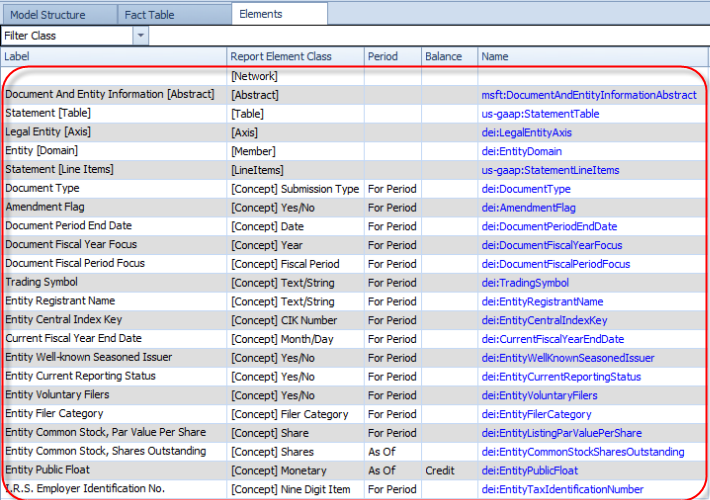 |
Property of Structure |
A report element set is a set of report elements that relate to a fact set. |
|
 |
 |
 |
OK |
| 46 |
Reporting Checklist Rule |
 |
Type of Rule (Assertion) |
A reporting checklist rule is a rule that describes the reportability of a disclosure. (A reporting checklist is similar to a disclosure checklist.) |
This type of rule is not explicitly expressed by XBRL, but XBRL does attempt to do something similar with the 'requires-element' arcrole. Essentially, the reporting checklist rules greatly expand on the 'requires-element' to articulate (a) structures that are ALWAYS REQUIRED in a report; (b) structures that are required IF SOME FACT IS REPORTED, say the 'Cash and Cash Equivalents Policy' is REQUIRED if the line item 'Cash and Cash Equivalents' is reported; (c) if structure A is reported; then structure B is also required to be reported; (d) structure X is an allowed alternative to structure Y; etc. |
 |
 |
 |
OK |
| 47 |
Reporting Entity Aspect |
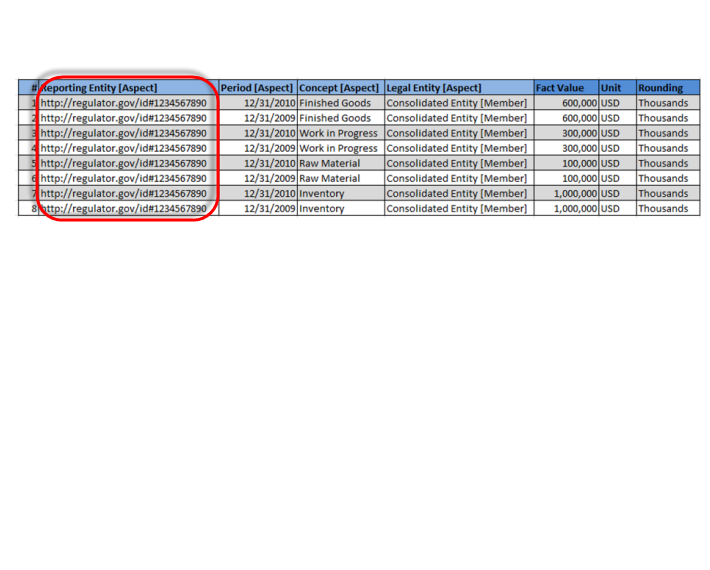 |
Type of CoreAspect |
A reporting entity aspect is a core aspect that distinguishes the economic entity which creates a report. |
|
 |
 |
 |
OK |
| 48 |
Reporting Scheme |
 |
Property of Report |
A financial reporting scheme is the set of statutory and regulatory rules used to report. |
|
 |
 |
 |
OK |
| 49 |
Reporting Style |
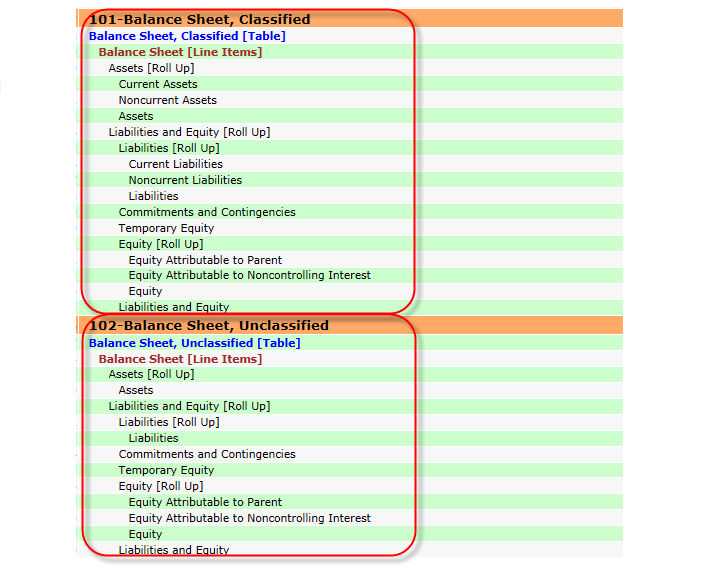 |
Property of Report |
A reporting style is a set of consistency check rules, mapping rules, and impute rules that are used to check fundamental accounting concept relations for a type of report. |
|
 |
 |
 |
OK |
| 50 |
Report Set |
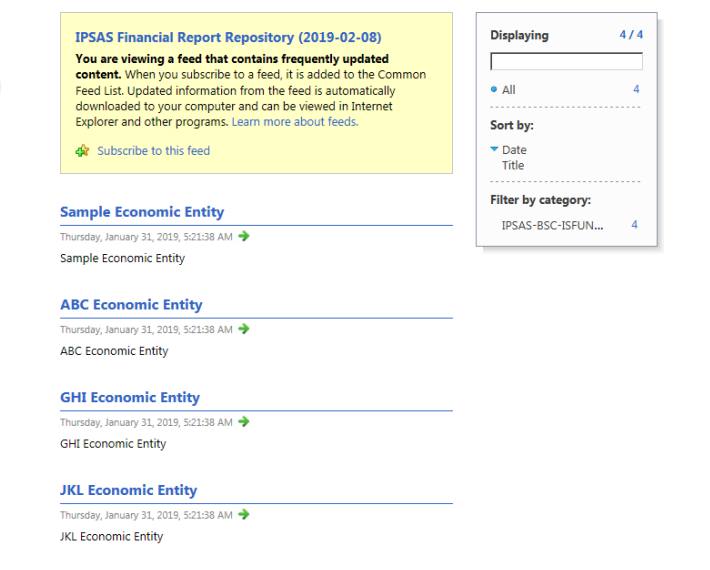 |
Functional Term |
A set of one to many Reports. |
|
 |
 |
 |
OK |
| 51 |
Roll Forward |
 |
Type of ConceptArrangementPattern |
A Roll Forward is a type of concept arrangement pattern which represents a basic roll forward mathematical relation: Beginning balance (stock) + changes (flow) = Ending balance (stock) |
|
 |
 |
 |
OK |
| 52 |
Roll Forward Info |
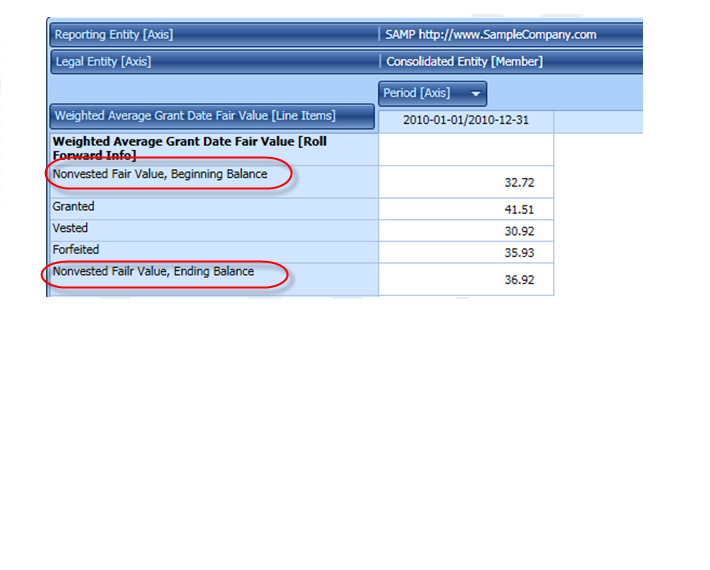 |
Type of ConceptArrangementPattern |
A roll forward info is a type of concept arrangement pattern which represents a non-mathematical relation of information about a roll forward type relation. |
|
 |
 |
 |
OK |
| 53 |
Roll Up |
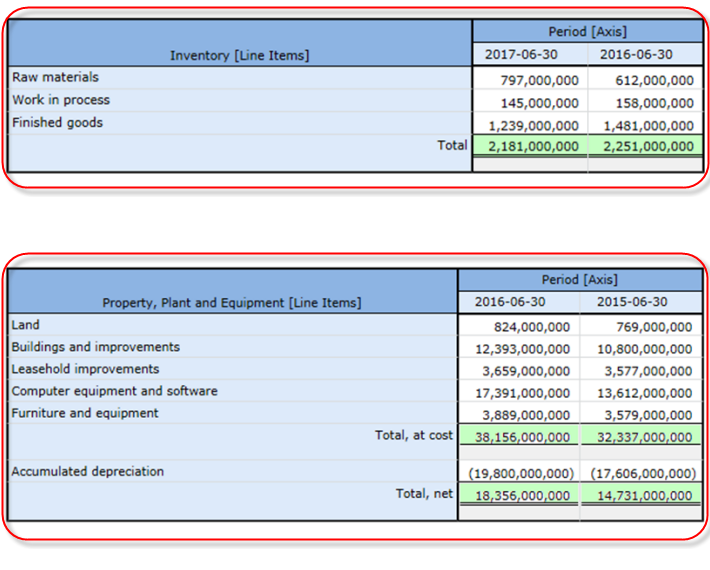 |
Type of ConceptArrangementPattern |
A Roll Up is a type of concept arrangement pattern which represents a basic roll up type mathematical relationship: Fact A + Fact B + Fact C = Fact D (a set of items and a total). |
|
 |
 |
 |
OK |
| 54 |
Rounding |
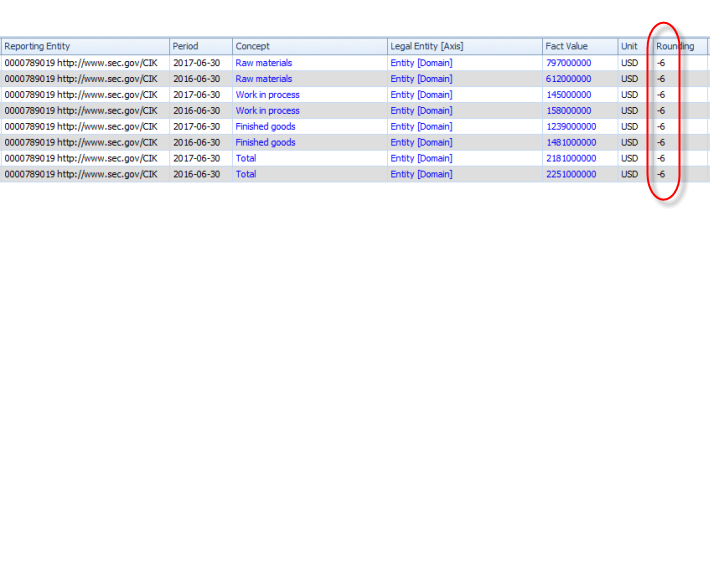 |
Property of Numeric Fact |
Rounding is a property of a numeric fact that is used to represne the decimals or precision of the numeric fact. |
|
 |
 |
 |
OK |
| 55 |
Rule |
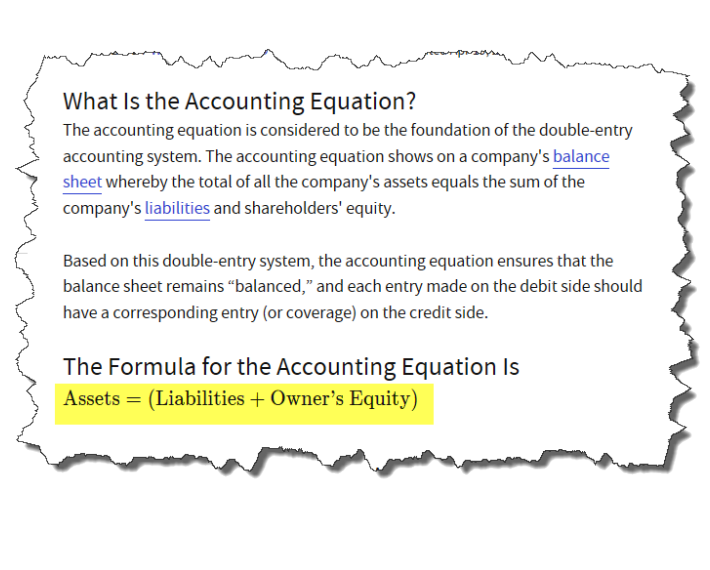 |
Functional Term |
A rule (a.k.a. assertion) is a type of statement which specifies a permissible manipulation within a structure within a model for a theory. Rules guide, control, suggest, or influence behaviour. Rules cause things to happen, prevent things from happening, or suggest that it might be a good idea if something did or did not happen. Rules help shape judgment, help make decisions, help evaluate, help shape behaviour, and help reach conclusions. |
Rule and Assertion are synonyms. There are three categories of rules: Axioms, Theorems, and Restrictions. An axiom is a statement which describes a self-evident logical principle related to a universe of discourse that no one would argue with or otherwise dispute. A theorem is a statement which makes a logical deduction which can be proven by constructing a chain of reasoning by applying axioms or other theorems in the form of IF. . . THEN statements. A restriction is a statement that is a special type of axiom or theorem imposed by some authority which restricts, constrains, limits, or imposes some range. |
 |
 |
 |
OK |
| 56 |
Set |
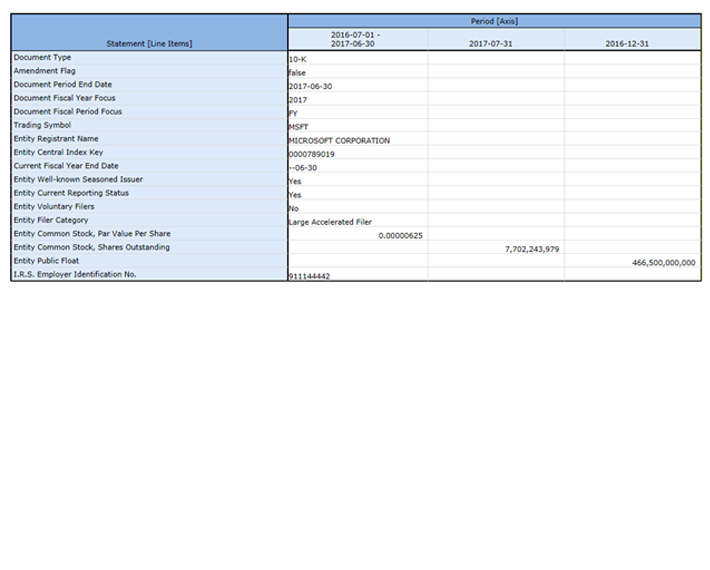 |
Type of ConceptArrangementPattern |
A Set is a type of concept arrangement pattern where concepts have no described mathematical relations. A.k.a. hierarchy. |
|
 |
 |
 |
OK |
| 57 |
Stock |
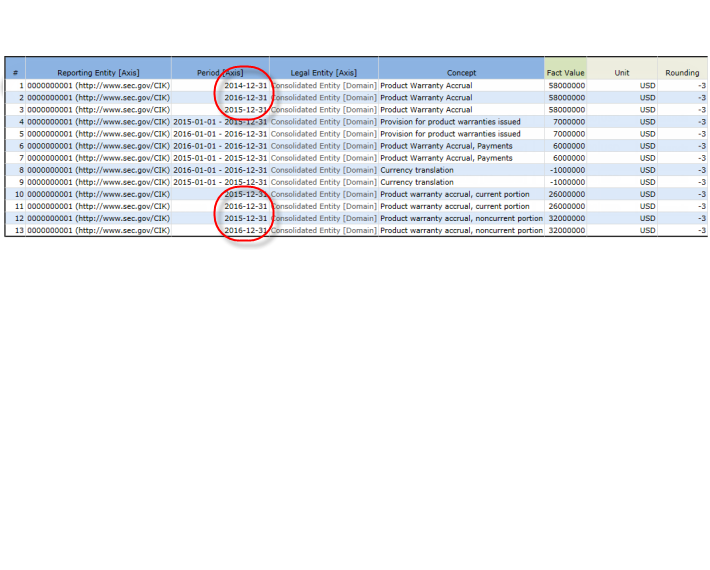 |
Type of CalendarPeriodAspect |
A type of calendar period aspect that is used to represent a fact as of a specific point in time. A.k.a. instant. |
|
 |
 |
 |
OK |
| 58 |
Structural Rule |
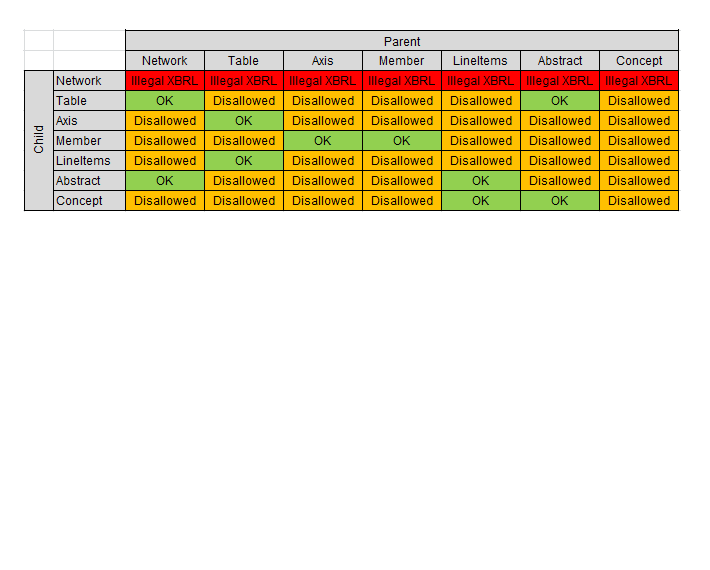 |
Type of Rule (Assertion) |
A structural relation expresses the relations between the report elements of a fact set. |
A structural rule relates to the association between the report elements (Network, Hypercube, Dimension, Member, Line Items, Concept, Abstract) that make up a Structure. Structure rules are represented using XBRL definition relations. |
 |
 |
 |
Remove? |
| 59 |
Structure |
 |
Functional Term |
A structure is a set of one to many Fact Sets which go together some specific purpose within a report. A.k.a. Fragment. |
|
 |
 |
 |
|
| 60 |
Structure Arrangement Pattern |
 |
Property of Report |
Relationship between structures or the order or sequence of structures within a report. |
|
 |
 |
 |
|
| 61 |
Table |
 |
Functional Term |
A table is a type of report element. A.k.a. hypercube or cube. |
This should be changed to Hypercube. |
 |
 |
 |
OK |
| 62 |
Template |
 |
Property of Disclosure |
A template is a representation of a disclosure that can be used in the process of creating a report. |
|
 |
 |
 |
OK |
| 63 |
Text |
 |
Type of FactValue |
Text is a type of value that is unstructured text (i.e. not prose). |
|
 |
 |
 |
OK |
| 64 |
Text Block |
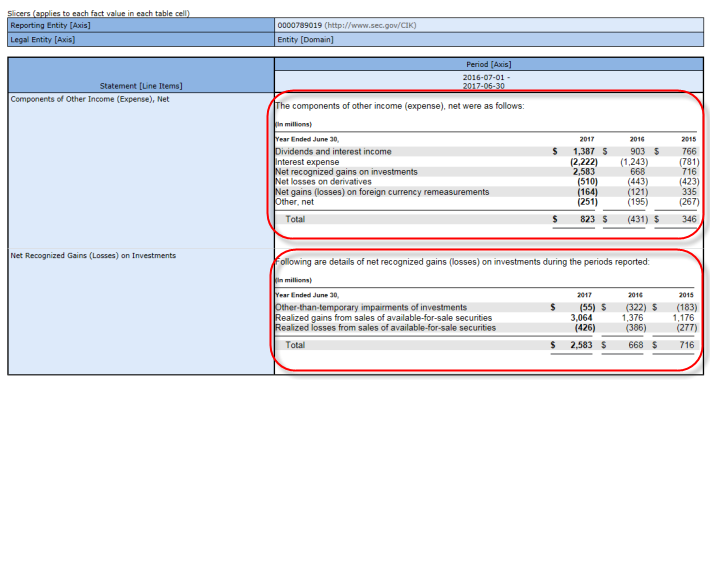 |
Type of ConceptArrangementPattern |
A text block is a type of concept arrangement pattern which represents a non-mathematical relationship in the form of prose. |
|
 |
 |
 |
OK |
| 65 |
Textual Value |
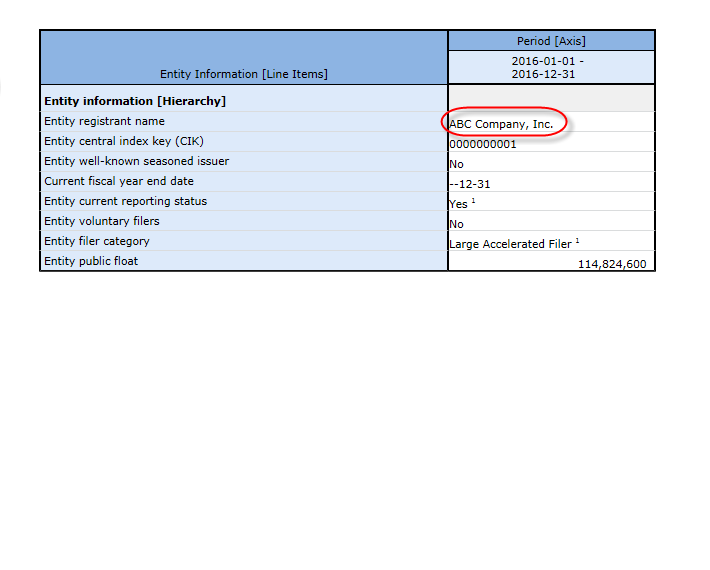 |
Type of FactValue |
A textual value is a type of value that is nonnumeric. |
|
 |
 |
 |
OK |
| 66 |
Topic |
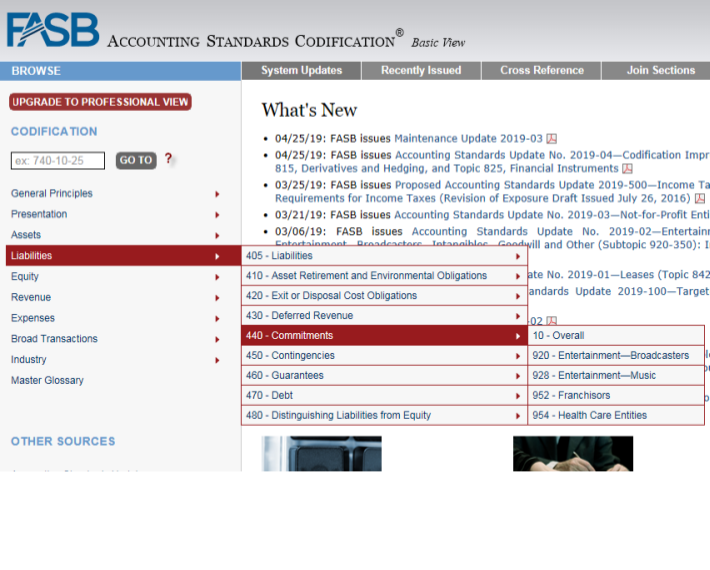 |
Property of Disclosure |
A topic is a category into which a disclosure can be organized. |
|
 |
 |
 |
OK |
| 67 |
Type Class Rule |
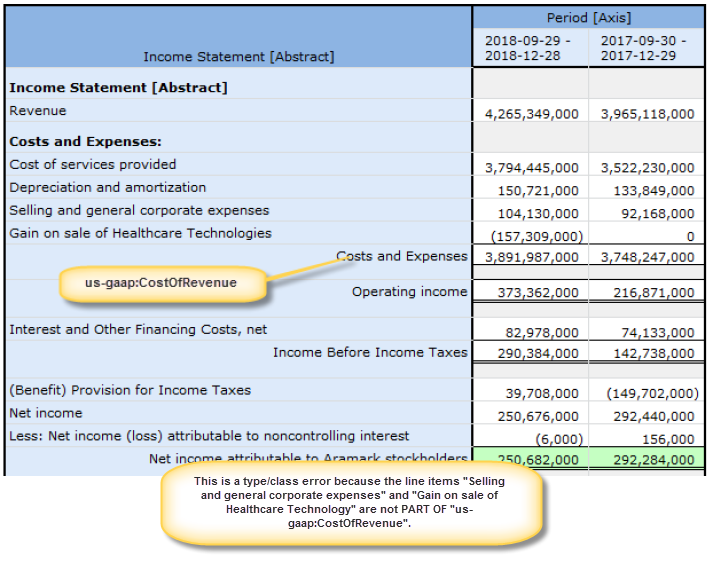 |
Type of Rule (Assertion) |
A type or class relation expresses the allowed relationships between concepts for a reporting style. A.k.a. class-subclass; a.k.a. general-special |
This is equivalent to the 'general-special' relationship in XBRL and the 'class-subclass' relationship in OWL. An example is to say that 'Cash and Cash Equivalents' is a TYPE OF 'Current Asset'; or that 'Repayment of Long-term Debt' is a TYPE OF 'Net Cash Flow from Financing Activities'. |
 |
 |
 |
Draft |
| 68 |
Units |
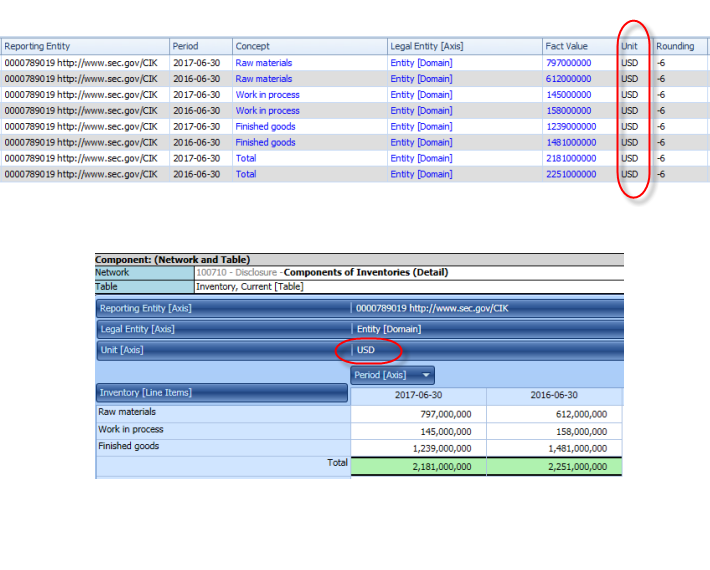 |
Property of Numeric Fact |
Units is a property of a numeric fact that is used to represent the units of the fact. |
|
 |
 |
 |
OK |
| 69 |
Variance |
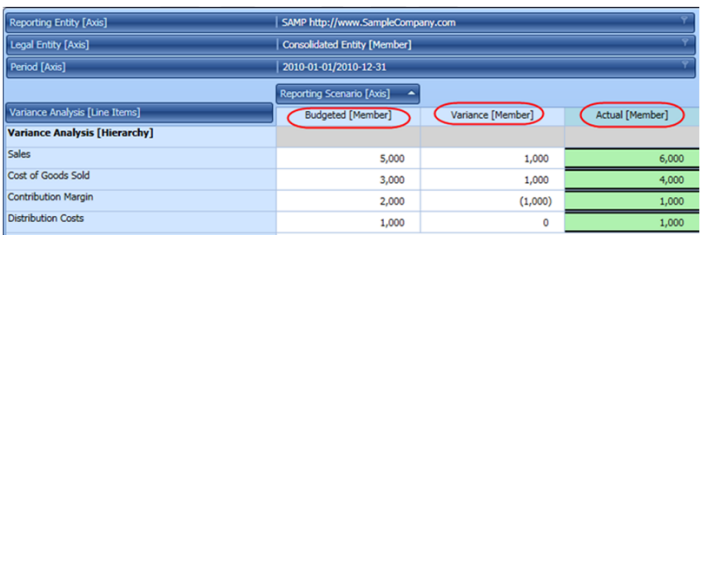 |
Type of ConceptArrangementPattern |
A variance is a type of concept arrangement pattern which represents a mathematical difference between two reporting scenarios: Amount (actual scenario) - Amount (projected scenario) = variance. |
|
 |
 |
 |
OK |